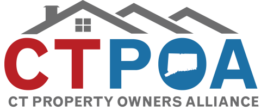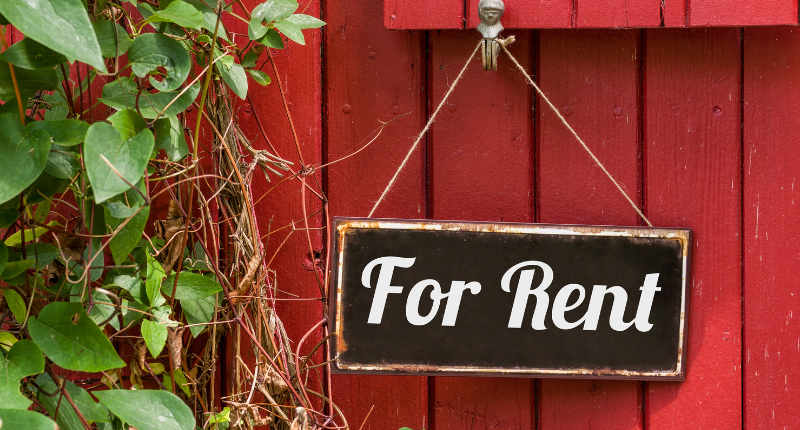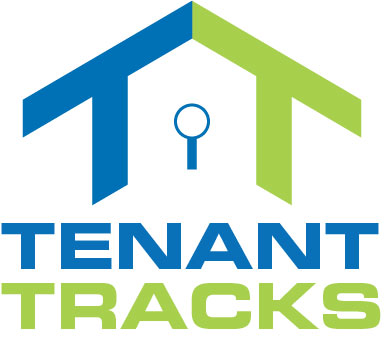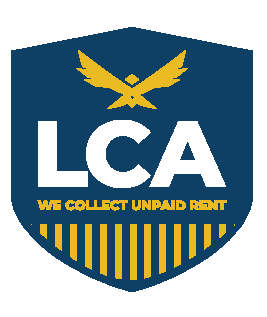Tenant turnover: Is it a mad dash or a smooth transition? For many Connecticut landlords, that period between one tenant moving out and another moving in often feels like a chaotic sprint. You’re juggling cleaning, repairs, marketing, and screening, all while trying to minimize costly vacancy days. It’s easy for the scramble to take over.
But what if you could turn that chaos into calm?
At the Connecticut Property Owners Alliance (CTPOA), we know that success comes from strategy, not just speed. We believe the secret to stress-free turnovers lies in proactive planning. By implementing a few simple steps long before your current tenant even gives notice, you can significantly cut down on vacancy time, reduce expenses, and ensure a seamless handover. Let’s show you how to transform your turnover process into a well-oiled machine.
Phase 1: Long Before Notice – Proactive Maintenance is Your Best Friend
The best time to prepare for turnover isn’t when your tenant gives notice; it’s right now. Regular, proactive maintenance saves money and time in the long run.
- Seasonal Maintenance Checks: In Connecticut, our seasons are distinct. Use them to your advantage.
- Spring/Summer: Check AC units, clean gutters, trim overgrown bushes, inspect exterior for winter damage.
- Fall/Winter: Inspect heating systems, clear leaves, ensure proper insulation, check for drafts.
- CTPOA Tip: Schedule preventative HVAC maintenance annually. A well-maintained system is less likely to break down during peak turnover times and can be a selling point.
- Regular Interior Inspections (with proper notice): Conduct a polite, pre-scheduled walk-through (with at least 24 hours’ notice as required by CT law, unless the lease specifies otherwise). This isn’t about nitpicking; it’s about:
- Identifying minor issues before they become major (e.g., a small leak under a sink).
- Checking smoke/carbon monoxide detectors.
- Noting general wear and tear, helping you budget for future repairs.
- Keep a “Go-To” Contractor List: Don’t wait for an emergency. Identify reliable, licensed plumbers, electricians, handymen, and cleaning services before you need them. Get quotes for common turnover tasks.
- CTPOA Tip: Ask other CTPOA members for recommendations – peer reviews are invaluable!
- Maintain Detailed Property Records: Keep a digital or physical folder for each unit. Include:
- Original move-in inspection report with photos/videos.
- Dates of major appliance purchases/installations.
- Paint colors and finishes used.
- Receipts for previous repairs and upgrades. This saves countless hours trying to remember or match details.
Phase 2: When Notice is Received – Communication & Strategic Planning
The moment you receive official notice that your tenant is moving out, a specific timeline begins. Act swiftly and communicate clearly.
- Acknowledge and Confirm in Writing: Thank the tenant for their notice and confirm the move-out date. Reiterate expectations regarding cleaning, repairs for tenant-caused damage, and the security deposit return process (referencing CT General Statutes § 47a-21, which dictates the 21-day return period).
- Provide a “Move-Out Checklist”: Offer your tenant a comprehensive checklist of what needs to be done before they vacate. This should include:
- Cleaning expectations (e.g., specific areas like appliances, bathrooms).
- Trash removal guidelines.
- Damage expectations (e.g., repair tenant-caused damage or be charged).
- Instructions for key return.
- A reminder to provide a forwarding address for the security deposit.
- CTPOA Tip: Frame this as helpful guidance, not a demanding chore list. A clear list reduces disputes later.
- Discuss Showings with Current Tenant: Politeness goes a long way. Establish clear rules for how and when you will show the property to prospective tenants (e.g., 24-hour notice, specific hours). Respect their privacy and belongings.
- Start Marketing Early: Don’t wait for the unit to be empty.
- Update your listing photos (use existing ones if the property is in good shape, or plan new ones immediately after move-out).
- Start advertising online (local rental sites, social media groups, etc.).
- Begin screening potential applicants even before the unit is vacant.
- CTPOA Tip: Highlight desirable features for CT renters, like proximity to town centers, commuter routes, good school districts, or local parks.
Phase 3: Leading Up to Move-Out – Pre-Inspection & Reminders
A few weeks before the official move-out, a final touchpoint can prevent last-minute surprises.
- Schedule a Pre-Move-Out Walk-Through (Optional but Recommended): About 2-3 weeks before move-out, offer a brief walk-through. This helps identify potential issues early, gives the tenant a chance to address them, and minimizes disagreements about damages. It’s a proactive step to ensure a smoother final inspection.
- Send Reminders: A week before move-out, send a friendly reminder of the move-out date, key return instructions, and the cleaning checklist. Provide utility transfer information if applicable.
Phase 4: Move-Out Day – Final Inspection & Key Handover
This is where all your planning comes together. Be thorough but efficient.
- Conduct the Final Inspection:
- Be Present (if possible): Conduct the inspection with the tenant present if possible. This allows for immediate discussion of any issues and transparency.
- Compare to Move-In Condition: Refer back to your move-in inspection report, photos, and videos. This is crucial documentation.
- Document Thoroughly: Take new photos and videos of the empty unit, noting any damage beyond normal wear and tear. Be meticulous.
- CTPOA Tip: “Normal wear and tear” is a key legal concept in CT security deposit disputes. Understand what it means – it’s not damage caused by neglect or abuse, but the deterioration that happens with ordinary use (e.g., faded paint, worn carpet in high-traffic areas).
- Collect All Keys: Ensure all keys, fobs, garage openers, and mail keys are returned. Change locks immediately after the tenant vacates for security reasons, especially if you plan to re-key instead of replacing the entire lockset.
- Confirm Forwarding Address: Reconfirm the tenant’s forwarding address for security deposit return.
Phase 5: During the Vacancy – The “Make-Ready” Period
This is the core time for repairs and cleaning, aiming for minimal downtime.
- Execute the Cleaning & Repairs Plan:
- Immediate Deep Clean: Have your cleaning crew or yourself thoroughly clean the entire unit. Don’t skip appliances, inside cabinets, or bathrooms.
- Assess & Prioritize Repairs: Refer to your notes from the pre-move-out and final inspections. Prioritize essential safety/functionality repairs (e.g., plumbing leaks, electrical issues) over cosmetic ones if time is tight.
- Call Your Pros: Deploy your pre-vetted contractors for any work beyond your DIY comfort or legal scope (e.g., plumbing, electrical, HVAC).
- Fresh Paint & Updates: If necessary, apply fresh paint, especially in high-traffic areas. Make those small upgrades (lighting, hardware) as identified in your “Smart Upgrades” plan.
- Security Deposit Accounting (CT Law):
- Within 21 days of the tenant vacating or receiving their forwarding address (whichever is later), you must return the security deposit or provide an itemized statement of deductions.
- CTPOA Tip: Understand the strict rules for security deposit retention in CT (CGS 47a-21). Improper handling can lead to the landlord owing double the security deposit amount. Keep all receipts for deductions.
- Update Marketing Materials: If you haven’t already, take fresh, high-quality photos of the sparkling, empty unit. Update your online listings to reflect the property’s ready status.
Phase 6: Before the New Tenant Moves In – The Final Polish
The property is ready, the new lease is signed. A few last checks make a huge difference.
- Final Walk-Through (Yourself or Manager): Do a quick final inspection to ensure everything is clean, working, and ready for move-in. Check light bulbs, test faucets, confirm all windows and doors lock properly.
- Set Up Utilities: Ensure utilities are ready to be transferred to the new tenant’s name on their move-in date.
- Welcome Packet Prep: Prepare the “Welcome to Your CT Home” packet you developed, including emergency contacts, local information, and any specific community rules.
- Confirm New Tenant Move-In Details: Communicate clearly about key pickup, utility transfer, and any specific move-in instructions.
The CTPOA Advantage: Less Scramble, More Success
By approaching tenant turnover with a proactive mindset and a clear plan, you achieve several critical outcomes:
- Minimized Vacancy: A quick turnaround means less lost rent.
- Reduced Stress: Knowing what to do and having a system in place removes much of the anxiety.
- Cost Control: Addressing issues early and efficiently often prevents more expensive problems.
- Happy Tenants: A smooth move-out experience for the old tenant and a pristine, ready-to-go unit for the new tenant fosters positive relationships.
- Legal Compliance: Following CT laws for notices, inspections, and security deposits prevents costly legal disputes.
Turnover doesn’t have to be a dreaded period. With smart planning, a well-defined process, and the insights from the Connecticut Property Owners Alliance, you can make every tenant transition smooth, efficient, and profitable for your Connecticut rental business.








